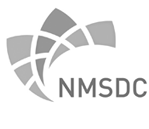Healthcare organizations work with a wide range of vendors: medical supply companies, other medical practices, and patient care solutions, just to name a few.
Managing the needs of multiple stakeholders can be overwhelming for healthcare procurement professionals—and understandably so. The average modern hospital relies on more than 1,300 external vendors to provide essential services, creating a complex web of relationships to oversee.
In the medical field, your work carries exceptional weight. You’re not just supporting operations—you’re contributing to what matters most to people: their health and well-being.
This post offers seven straightforward, effective strategies to simplify healthcare vendor management, so you can spend less time on logistics and more time focusing on what truly matters: delivering outstanding care and making a meaningful difference in your community.
Standardize Onboarding Procedures
Vendor onboarding is the first step of a successful partner relationship. Without a clear process in place, everything becomes chaotic. Important steps are miscommunicated, expectations become unclear, and crucial documents can go missing.
This inconsistency wastes time and snowballs into even bigger problems in the future. Standardizing the onboarding process resolves all these issues.
When you standardize the onboarding process, you create a repeatable, documented process for all vendors to go through before working with your organization. Standardization is important for several reasons:
- It reduces misunderstandings and errors. Standardization ensures accuracy and consistency. If onboarding differed for every vendor, important steps like verifying licenses could be skipped.
- It saves you time. It eliminates guesswork, shortens the onboarding time, and frees up staff to focus on more strategic tasks.
- It strengthens relationships. Since onboarding is the vendor’s first experience with your organization, you want it to be smooth and professional to set the tone for a strong working relationship.
- Finally, it improves compliance. Through a standardized onboarding process, you are able to verify that all vendors meet the legal and regulatory policy requirements.
Here’s a pro tip: Use vendor management software like Nectar iQ to track and automate this process. It’s easier, faster, cheaper, and creates an audit trail that protects your organization in the long run.
Implement Centralized Technology Platforms
Using spreadsheets and scattered documents to manage vendors can get messy real fast. It’s easy to lose vendor details in the shuffle and end up spending more time searching for the information than managing the relationship.
A centralized technology platform acts as a single hub for all vendor activities. You can manage contracts, monitor deadlines, track performance metrics, and even communicate directly with vendors, all from one place.
Such a setup reduces miscommunication and keeps your team aligned. It also shows the contribution of every vendor. You can see who’s performing well, who’s falling behind, and where you may need adjustments.
Nectar iQ’s database is modern, intuitive, and automated. It centralizes all activities performance reports, credentials, contracts, and communications so that teams remain organized in one digital workspace.
Align Vendors with Community Health Goals
Your vendors may not wear scrubs or see patients, but their role in how care is delivered and received in the community is still important. They are behind the scenes to support your staff in improving health outcomes.
This is why it’s important to go above basic service to ensure your vendors align with your broader mission. Doing so builds community trust. There are different ways to make this happen:
- During onboarding, share your organization’s mission with your vendor. Let them know about your health goals and how they will be contributing.
- Set shared expectations in your agreements. This way, both sides know what is expected of them.
- Involve vendors in education campaigns, outreach programs, and health fairs. Such efforts can increase community engagement.
- Lastly, regularly review how your vendor’s work supports overall community wellness. Use this feedback to improve outcomes and strengthen the relationship.
Foster Long-Term Partnerships
Trust and consistency are important in healthcare. You are better off building long-term partnerships than constantly switching vendors for quick fixes or short-term savings.
Short-term vendors feel more like outsiders and less like a part of your team. The longer a vendor works with you, the more they understand your organizational goals and workflows. They become familiar with your company such that they can anticipate your needs even before you ask.
This kind of familiarity ensures that work gets done efficiently and in an approachable way.
How do you foster this relationship?
- Communicate regularly with your vendor, and not just when something goes wrong. Regular communication builds trust.
- Be open about everything, including what’s working and what’s not. Also, invite them to share their insights. Maybe they see something you don’t.
- Plan for the future together with your vendor. When they understand your vision and goals, they can better position themselves to adapt.
- Recognize and reward good work. Showing appreciation goes a long way.
All this is now easier with Nectar iQ. You can track milestones, set reminders for contract renewals, and view spend performance from the real-time dashboards.
Improve Data Transparency
Data in healthcare is important. Accessible data is crucial. With the right data at the right time, decisions become faster, smarter, and more aligned with your goals.
Improving your organization’s data transparency means upgrading from siloed reports and hidden spreadsheets to open, collaborative systems. These systems help you find and understand key information for both your vendor partners and internal team.
Nectar iQ’s financial reporting transparency helps healthcare vendor management decision makers make the right decisions at the right time.
Integrate Stakeholder Requirements and Sustainability Considerations
While it makes sense to opt for a vendor with the lowest price and fastest delivery, you also want to align with your company’s values. As a healthcare organization, this is a golden opportunity to lead by example. Who you choose to work with says a lot about you, as the old saying goes.
Considering supporting the local community that you serve reflects your organization’s mission. Patients and community partners notice this and are more likely to work with you. They will grow with you, adapt with you, and choose you even during challenges.
Evaluate Vendor Performance
The real work begins once a vendor is onboarded. While you don’t want to micromanage your vendor, you also don’t want them working unchecked. Regularly evaluating vendor performance is how you make sure expectations are met and even exceeded.
Just like a visit to the doctor in your personal life, it’s not only about spotting red flags — it’s also about finding ways to grow, improve, and strengthen the partnership.
Plus, vendors who are evaluated regularly are more likely to stay responsive and proactive.
When evaluating your vendor,
- Make the relationship two-way. Allow the vendor to share their thoughts on how you can work better together.
- Involve your team. Pay particular attention to your frontline staff who directly interact with the vendors. Their insights are helpful since they notice things that may not show up in the data.
- Use clear metrics. These can include: error rates, delivery times, and compliance levels.
- Keep all evaluation records. This helps with continuous process improvement audits, contract renewals, and tough decisions.

Strategies to Boost Community Impact Through Vendor Collaboration
Vendors, on top of supplying goods and services, can create meaningful change in the communities you serve. Here are a few strategies you can use to maximize your impact on your community using your vendors.
Prioritize Local Small Business Vendors
Choosing to work with local small business vendors is a meaningful way to create a lasting impact. Every purchasing decision is an opportunity to drive positive change in your surrounding communities.
By partnering with businesses that are embedded in your community, you help retain economic value locally, foster job growth, and empower smaller enterprises to compete. These collaborations strengthen community ties, enhance trust, and demonstrate a commitment to reflecting the diversity within your workforce.
Align Vendors with Organizational Values
Effective vendor partnerships are built on shared purpose. For health-focused organizations, it’s not just about working with vendors—it’s about working alongside them.
When vendors embody your organization’s core values, collaboration becomes more seamless, impactful, and purpose-driven. The right partners don’t just deliver services—they help you amplify what matters most.
Encourage Health Outreach and Education Initiatives
Vendors can offer far more than just services—they bring valuable networks, resources, and influence that can help advance your organization’s mission in innovative ways.
Consider engaging them in educational initiatives and community outreach programs. When outreach is collaborative, it becomes more impactful. Your vendors can be essential allies in connecting with and supporting the communities you both care about.
Encourage Sustainable Practices
The vendors you work with can make a big difference in reducing the environmental footprint. Ask them to adopt eco-friendly practices such as choosing products with minimal or recyclable packaging. After all, caring for the environment benefits everyone.
Your Next Step Toward Impactful Vendor Management
Vendor relationships aren’t just operational—they help shape the healthcare system you want to lead. Managed well, they do more than keep things running—they improve how you serve.
By simplifying workflows and aligning values, you can reduce chaos and focus on impact. These strategies go beyond efficiency. They build trust, support equity, and boost patient care.
Better vendor management isn’t about control. It’s about empowering your team and partners to work together toward a healthier, stronger community.
Why Trust Us
While others offer tools, we offer transformation. Our platform goes beyond basic vendor tracking to build strategic, values-aligned partnerships that drive real community impact.
- Mission-First Onboarding: Every vendor joins with your care goals in mind.
- Impact Metrics That Matter: We track more than compliance.
- Local + Inclusive by Default: Support community vendors who reflect your values.
- Frontline-Driven Feedback: Real-time insights from the people closest to the work.
- Built for Long-Term Growth: Collaborate, evolve, and create impact together.
We’re not just managing vendors—we’re building ecosystems that care.
For years, Nectar iQ has been at the forefront, supporting healthcare organizations with their missions. Reach out today and learn how we can help you build smarter and stronger vendor relationships.
Frequently Asked Questions (FAQs)
How can healthcare vendor management be improved?
Improve vendor management by making the entire process collaborative, structured, and transparent. Begin by standardizing the onboarding process so every vendor is evaluated with the same criteria. Then use centralized tech to track performance, streamline communication, and store contracts.
The idea is to make healthcare vendor management more strategic and less reactive.
How to manage healthcare vendor management?
Treat healthcare vendor management as an ongoing process and not a one-time setup. Choose vendors carefully based on compliance, values, long-term fit, and capability. Provide them with clear roles, guidelines, and expectations. Communicate with them openly, sharing feedback wherever needed. And evaluate performance using clear metrics.
When done properly, vendor management becomes a strategic advantage.
How often should you evaluate vendor performance?
Vendor service audits and evaluations should take place regularly, on a quarterly or bi-annual basis. The more frequent the evaluation, the better the chance to identify issues early, build better communication, and strengthen the partnership.
How can vendor management help us maximize positive community impact?
Vendors who understand and support your organization’s mission become allies in driving real change. To build a more substantial and more trusted healthcare experience, choose vendors that reflect your community values and collaborate on outreach.












